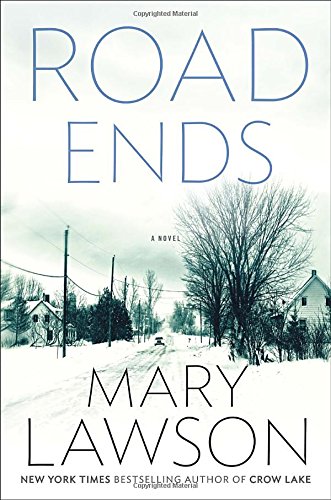Road Ends
Megan Cartwright is the glue that holds her family together. At twenty-one, she’s never ventured outside the small isolated town of Struan, in northern Ontario, Canada; instead, she keeps house for her parents and six brothers. Cleaning, cooking, diapering, packing children off to school, supervising homework, and running a household is exhausting but also fulfilling.
Megan knows she can do more, though, and she leaves her family behind to start her own life across the pond in England. Her arrival is anything but smooth: 1969 London is loud, colorful, and completely alien to naïve and sheltered Megan. Her journey toward self-knowledge and independence is paralleled by the increasing chaos back at the Cartwright household. Without Megan, the school-age boys get in trouble; Megan’s favorite, little Adam, doesn’t always get fed or bathed; her mother Emily, has another baby and rarely leaves her room. Her bank-manager father, Edward, becomes increasingly querulous and is forced to confront his own past without Megan there to protect him from getting involved with the day-to-day matters of the family. Her college-graduate brother, Tom, drives the town snowplow while brooding over the death of a friend.
Chapters are told from the voices of Megan, Edward, and Tom, and the different perspectives reveal individuals, a family, a town, and indeed a world, at a crossroads. There’s some embracing of that opportunity to grow and change, but the main response is fear, and resistance. Reconciling with the past and actively seeking a more functional future is difficult, especially when it comes to figuring out how, and whether, to do the “right” thing. The geography and late 1960s culture of rural Canada are well rendered against the vibrancy of London; Lawson’s insight into her characters is strong, drawing the reader in to this riveting coming of age story.










